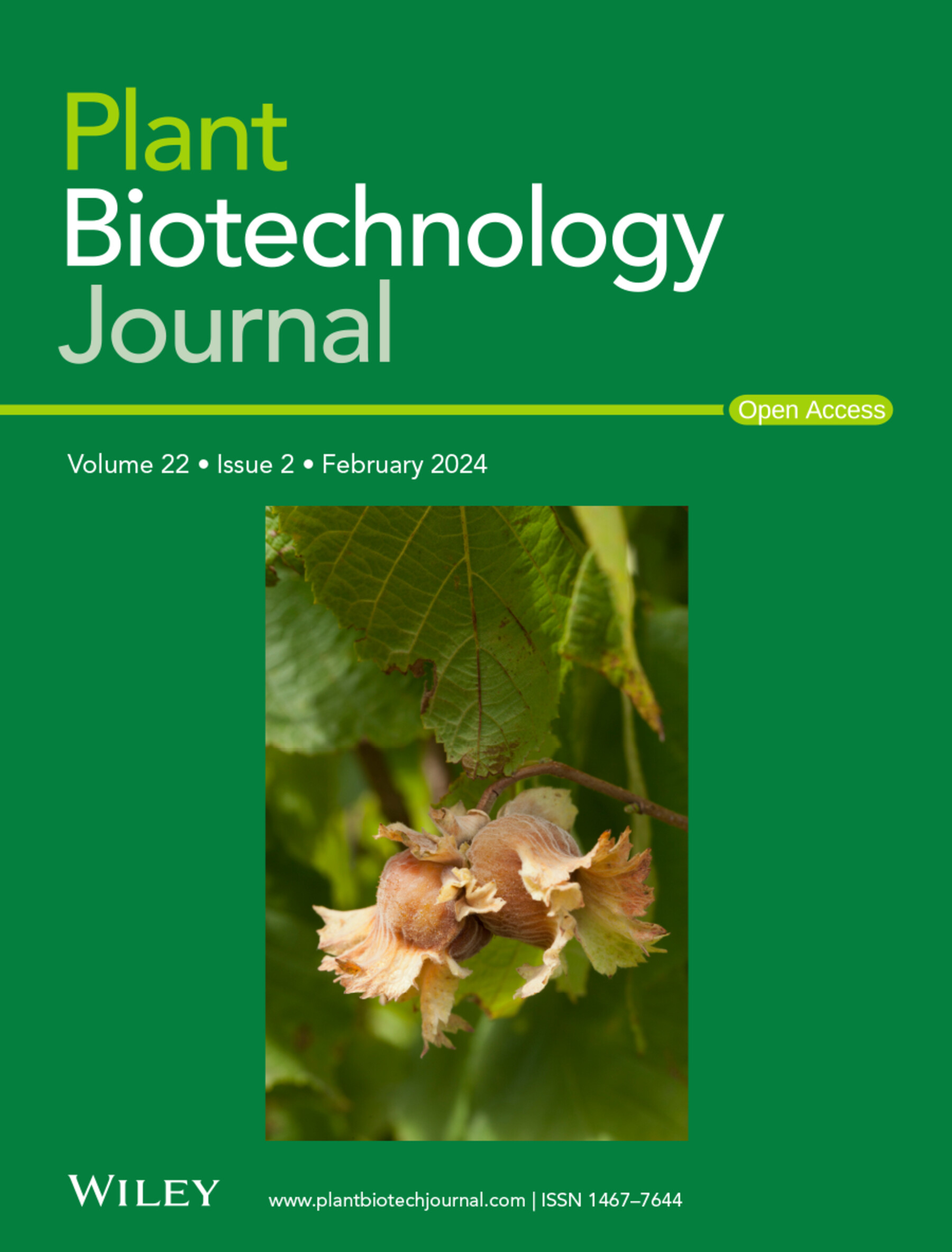赤霞珠(Cabernet Sauvignon)葡萄冬芽从休眠到发芽的调控网络的多组学分析
IF 10.1
1区 生物学
Q1 BIOTECHNOLOGY & APPLIED MICROBIOLOGY
引用次数: 0
摘要
摘要冬季休眠和破芽对果树的生存能力、适应性和产量至关重要,但对果树维持和破芽的代谢活动和调控因子了解并不多。在这里,从自然休眠到发芽的冬芽都是从“赤霞珠”(Cabernet Sauvignon)葡萄树上采集的,这些葡萄树要么在室外种植,要么被迫在室内种植。分析了不同芽期的转录组、蛋白质组和植物激素含量。无论是室内还是室外,冬芽均表现为休眠、休眠释放和芽发育三个主要阶段。加权相关网络分析(Weighted Correlation Network Analysis, WGCNA)和基因本体分析(Gene Ontology, GO)对组学数据进行了分析,发现不同阶段的生物过程不同。差异表达基因(DEGs)分析鉴定出7个可能影响葡萄休眠和芽裂的候选基因。这7个基因的瞬时转化表明,VvDOGL4、VvAGL65和VvMARD能够促进葡萄冬芽休眠的维持。亚细胞定位表明,这三种蛋白均位于细胞核内,酵母双杂交筛选表明,它们可能与植物激素信号转导、呼吸、能量代谢和转录调控等相关蛋白相互作用,影响葡萄冬芽断裂。总之,这些发现有助于更好地理解多年生水果作物芽休眠的调控动态,并为探索关键基因和调控机制奠定基础,这些基因和调控机制可以在全球气候变化的情况下提高水果品质和产量。本文章由计算机程序翻译,如有差异,请以英文原文为准。
Multi‐omics analysis of the regulatory network in winter buds of ‘Cabernet Sauvignon’ grapevine from dormancy to bud break
SummaryWinter dormancy and bud break are crucial to the viability, adaptability and yield of fruit trees, but not all metabolic activities or regulatory factors involved in maintaining and breaking dormancy are known. Here, winter buds, spanning from natural dormancy to bud break, were collected from ‘Cabernet Sauvignon’ grapevines maintained outdoors or forced indoors. The transcriptomes, proteomes and plant hormone contents were analysed across several bud stages. The winter buds presented three main stages, dormancy, dormancy release and bud development, whether grown in or outdoors. Weighted Correlation Network Analysis (WGCNA ) and Gene Ontology (GO ) analysis of the omics data revealed that the different stages were enriched for different biological processes. Analysis of the differentially expressed genes (DEGs ) identified seven candidate genes that may affect grape dormancy and bud break. Transient transformation of these seven genes showed that VvDOGL4 VvAGL65 VvMARD
求助全文
通过发布文献求助,成功后即可免费获取论文全文。
去求助
来源期刊

Plant Biotechnology Journal
生物-生物工程与应用微生物
CiteScore
20.50
自引率
2.90%
发文量
201
审稿时长
1 months
期刊介绍:
Plant Biotechnology Journal aspires to publish original research and insightful reviews of high impact, authored by prominent researchers in applied plant science. The journal places a special emphasis on molecular plant sciences and their practical applications through plant biotechnology. Our goal is to establish a platform for showcasing significant advances in the field, encompassing curiosity-driven studies with potential applications, strategic research in plant biotechnology, scientific analysis of crucial issues for the beneficial utilization of plant sciences, and assessments of the performance of plant biotechnology products in practical applications.
 求助内容:
求助内容: 应助结果提醒方式:
应助结果提醒方式:


